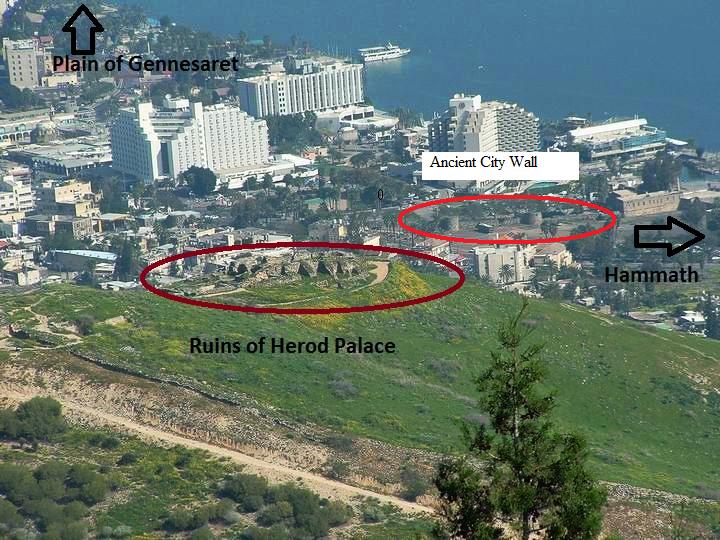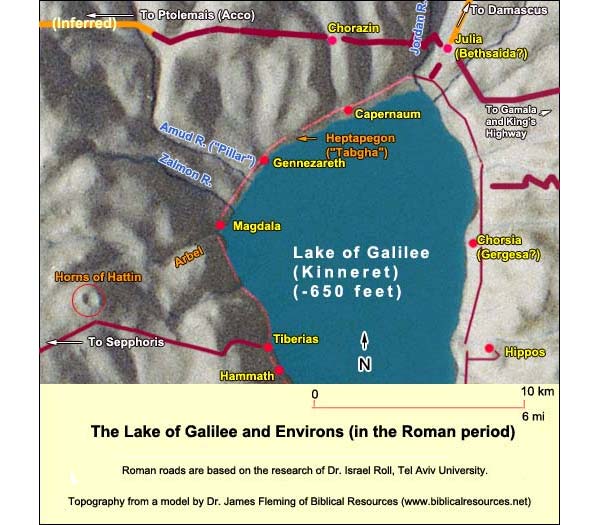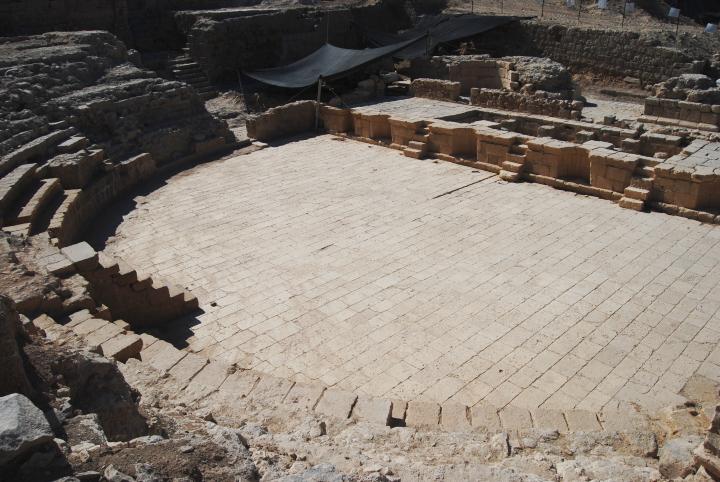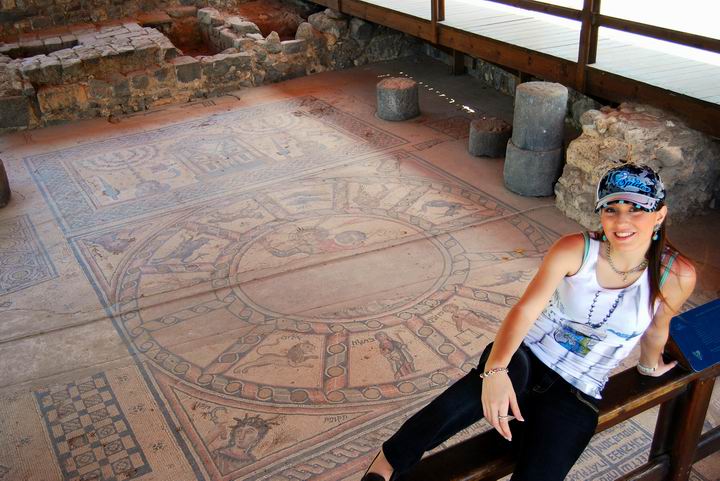
 |
Freethought & Rationalism ArchiveThe archives are read only. |
|
|
#101 | |||
|
Veteran Member
Join Date: Sep 2003
Location: On the path of knowledge
Posts: 8,889
|
Quote:
I've yet to ever see one with evidence of having been stamped with big red letters saying COPY For all these paleographers know Rylands p52 may well be the oldest, and the original text of John straight from the original authors hand. With nothing earlier found there is no way of knowing. And no reason to assume that there were any earlier editions. |
|||
|
|
|
|
#102 |
|
Regular Member
Join Date: Jul 2011
Location: Japan
Posts: 156
|
The reason we find the most ancient papyri in Egypt is surely due as much to climate as anything else.
Let me add that I've enjoyed this series of posts by Rlogan very much. |
|
|
|
|
#103 | |
|
Contributor
Join Date: Feb 2006
Location: the fringe of the caribbean
Posts: 18,988
|
Quote:
It is the climate which has PRESERVED the EVIDENCE that makes us know that the Jesus cult was in Egypt. The Dead Sea Scrolls were found in Qumran and NOTHING at all about Jesus or the Jesus cult was discovered. Ancient manuscripts as early as the 2nd century have been found in Egypt both Canonised and Non-Canonised so it must be or very likely that the Jesus story and cult IMPACTED the people of Egypt from at least the 2nd century. |
|
|
|
|
|
#104 | |
|
Banned
Join Date: Oct 2003
Location: Alaska
Posts: 9,159
|
Quote:
Perhaps it is worth noting too that here again we have Mark naming a place that is controversial even to its existence. Between the use of the Hebrew Nazir (a person taking certain religious vows) through the Greek Septuigint and its application in Mark, it becomes a place name: Nazareth. In short, we have what begins in Hebrew as a type of person (he shall be a Nazarite) ending up as coming from a place (Nazarite meaning coming from Nazareth). Hence the importance of whether archaeologically speaking there was a town in existence at the time. There are numerous other demonstrations that the Greek Septuigint is being used for constructing the Christian fables tacked on to the Hebrew Bible, so this is hardly an isolated example or speculation. I don't have the time to address it here beyond the geography again being suspicious. I am not competent enough to address aa's concerns regarding manuscripts in Egypt that came prior to the Nag Hammadi find. We cannot so easily dismiss a hypothesis that the oldest texts will be found nearest the cradle of Christianity. It is a strong hypothesis on the face of it, taken in isolation. Running against that thesis is the question why the books are written as letters to so many Greek cities in what is now Turkey. The most important communication you would expect to find would be between the two capital cities of the northern and southern Egyptian empire if literature first arose there. Tenorikuma does offer us an important qualifier concerning the arid climate preserving texts the best. I do have an open mind, and have no interest in pushing one theory or another. If Christianity arose first in Alexandria that would be just fine with me. I have more study to do on the issue. But the theory, if it is to come from Alexandria, still needs a champion. A benefactor. We need money, political power, and lines of transmission from place to place in order to establish and propagate a religion. This is where Marcion again is so powerful as a thesis. Every element necessary for it is not just present, but in a huge way. It comes from the center of learning, wealth, commerce, and politics in the Greek sphere of the Eastern Roman Empire and we have a specific individual engaged in the exact trade (shipping) that is most logical as the organizing force. A shipper receives his goods from the most important producers in every place and delivers them to the most important merchants distributing them. So he is the lynchpin of economic and political organization in every direction. He is involved in communications by the delivery of correspondence and couriers or representatives so there is no better candidate for the organization and dissemination of Christianity. |
|
|
|
|
|
#105 | ||||
|
Veteran Member
Join Date: Sep 2004
Location: Birmingham UK
Posts: 4,876
|
Quote:
(The beginning of the Gospel in Mark 1:1 means this is how the Gospel began not this is the first account of the Gospel, Compare Mark 13:8.) Quote:
On the specific point of Tiberias: unless you are dating Mark earlier than I believe you are, I don't think that Mark would have been really bothered by the idea of someone attempting to check with the local council at Tiberias whether they had any record of a preaching and healing mission by Jesus 50 or more years ago. The point you make about Herod is interesting. On reflection I am dubious about the idea that Jesus avoided Tiberias on the ground of ritual impurity. The condition of Tiberias clearly posed a serious problem to Jews who took a strict position on ritual purity. But according to the Gospels Jesus does not seem to have taken a rigid line on these issues. However, a visit to Tiberias would have risked an encounter with Herod, which, given the fate of John the Baptist, Jesus may have wished to avoid. Andrew Criddle |
||||
|
|
|
|
#106 | ||
|
Veteran Member
Join Date: Jun 2010
Location: seattle, wa
Posts: 9,337
|
Place names were altered in various gospel recensions. Consider the Marcionite gospel's substitution of 'Bethsaida' for 'Nazareth.' It is difficult to see why Jesus would have avoided Tiberias. Maybe he didn't. Even if we consider that the gospel writer had him avoid Tiberias, this may be an important clue for (a) the identity of the author (b) his purpose in writing the narrative. The closest we get to a mention of Tiberias is this reference in Clement Stromata 6.10:
Quote:
Quote:
|
||
|
|
|
|
#107 | ||
|
Banned
Join Date: Oct 2003
Location: Alaska
Posts: 9,159
|
Quote:
The ending explains why nobody has heard the story before Mark tells us. If he tells us the women went all about shouting of his resurrection then Mark will have a very hard time explaining why the story is unknown. Once Christian literature is in wider circulation they can add to the ending of Mark without worrying so much. Matthew by that time is positively obscene with his wise men bringing gifts to the birth and other embellishments. Quote:
If I were sick in my bed, alongside the others at the baths, I would think this guy a major prick for making us take our beds out into a wheat field instead of just walking over to where the sick people are. From a health administration standpoint, Jesus is an idiot. He is allegedly appearing before multitudes on flat farmland with no acoustics when they can just skip over to a perfectly good ampitheater and actually hear what he has to say. It is an impossibility for Herod to not hear of these fantastical doings less than an hour's march away. We cannot with a straight face claim that Jesus is hiding from Herod when Herod can look out his window and see Jesus with this throng of people around him. That's why looking at the Geography is so useful. |
||
|
|
|
|
#108 | ||
|
Contributor
Join Date: Feb 2006
Location: the fringe of the caribbean
Posts: 18,988
|
Quote:
In the Gospel called Luke Herod was EXTREMELY delighted to see Jesus because he hoped Jesus could perform some miracles. Luke 23:8 KJV Quote:
|
||
|
|
|
|
#109 |
|
Banned
Join Date: Oct 2003
Location: Alaska
Posts: 9,159
|
Here is a picture of Herod's Palace ruins overlooking the city of Tiberias. He founded it in 18 CE, as King over Galilee and beyond. It was the seat of his government - the administrative headquarters and an important strategic military fort.
 Ancient Hammath is a walled city, famous for its baths as early as the Anastasi Papyrus, 13 centuries BCE. It lay upon the trade route between Syria/Mesopotamia and Israel/Egypt. Because it had the East protected by water and the west by the mountains, the fortress walls made it impregnable. It was a fortified Canaanite City, same culture as the Phonecians, back to the bronze age I gather. But Herod built the walled city of Tiberias several hundred meters north of Hammath's walls. It was centuries before Tiberias expanded to include both. Tiberias mainly grew to the north instead. The old fox Herod has made his personal walled palace and administrative center 190 meters above the ancient city walls of Tiberias that can be seen down below by the shore. If you are standing at the shoreline, you can only see 3 miles to the horizon. (Because of the curvature of the earth). From Herod's Palace you can see 25 miles to the horizon. So he can see the entire lake, and in particular the Gennesarat Plain, and the alleged site of Bethsaida - every city in the region in fact, shown here:  From that map above, if we use the City of Julia as the most northerly reference point on the Sea of Galilee, we can run down the place-names on the Western bank: Cepernaum Heptapegon Genezareth Magdal Tiberias Hamath And down the East bank from Julia Chorsia Hippos I am unsure further South, but this is fine for discussion purposes as the general area of Jesus' most spectacular crowds. Feeding five thousand, for example. Note again there is a question mark next to the known city of Julia as possibly the location of "Bethsaida" in Mark. Down below we have a question mark at Chorsia where Gergesa has a question mark. This is rather the point about Mark - these Markan cities appear not to exist, at least as Mark imagines them. Hammath/Tiberias became an extremely important Jewish center in the first century. It was the location of the Sanhedrin after Jerusalem was destroyed in 70 CE. I really hope we can drive a stake in the heart of this vampire that the Jews would not want to settle in this area. The Sanhedrin does, to my understanding have a somewhat Jewish patina. The Jews flocked to Galilee after the destruction of Jerusalem. Now had the emminent Jewish historian Josephus mentioned Jesus in Galilee where he became the most famous, it would have been right here in Tiberias or Hammath. He would have spoken in this ampitheater, seating 7,000 that dates to the first Century, I think erected by Herod:  The mosaic below is from the 5th century at an historic Synagogue:  It was the most interesting geographic item I found on this particular segment of our journey, and I hope you find the same. The old mosaic was destroyed in the fourth century. But this is one of the four holiest cities for the Jews. The important summary issue is that Herod as King of this region during Jesus' reign was within personal eyesight of everything Jesus allegedly did along the Sea of Galilee on account of his Palace and fort's placement above Tiberias. Understandably he could see an approaching infantry or ships, and at night-time see even the lighting from a single candle anywhere along the lake. I researched that and discovered so to my amazement. Herod could personally see lines of people carrying beds out to Gennesaret, and this is the direction they would be coming from. He could easily see an assembly of five thousand people. His runners could distance the circumference of the lake in less than a day for communications amongst the towns. So there isn't any way a miracle worker/faith healer or famous man in Galilee is going to escape Herod's attention. The only way Mark can get away with his story is to tell it to people who live far, far away from here, and who do not know either the history or the geography. You can see with your own eyes here that the story is absurd, even scaled down to a man of quite modest fame. |
|
|
|
|
#110 | |
|
Contributor
Join Date: Feb 2006
Location: the fringe of the caribbean
Posts: 18,988
|
Quote:
The very accounts of Jesus in gMark are implausible, that is, they could not have happened in the 1st century or at any time even up to today. The authors of the Canon that place themselves in the 1st century are the author of Acts and the Pauline writer. The author of Acts claimed he traveled and prayed with Paul Before c 59-62 CE and the Pauline writer claimed he was in Damascus during the reign of King Aretas c 37-41 CE. The author of Acts implied that there were Thousands of converts to the Jesus cult before c 37-41 CE and the Pauline writer seems to suggest that there were Churches of the Jesus cult all over the Roman Empire including Rome, Corinth, Galatia, Ephesus, Thessalonica, Philippi and Colosse. In fact, the Pauline writer claimed he was NOT lying when he wrote his fiction stories about the resurrection. In any event, Nothing can be found of the thousands of Jews of the Jesus cult in Acts and Paul's Churches have not been found in any region. It would appear that the Markan story has been Corroborated. The Markan story was fiction and that is precisely why we can't find anything about Jesus of Nazareth the Messianic ruler anywhere in Judea. |
|
|
|
| Thread Tools | Search this Thread |
|